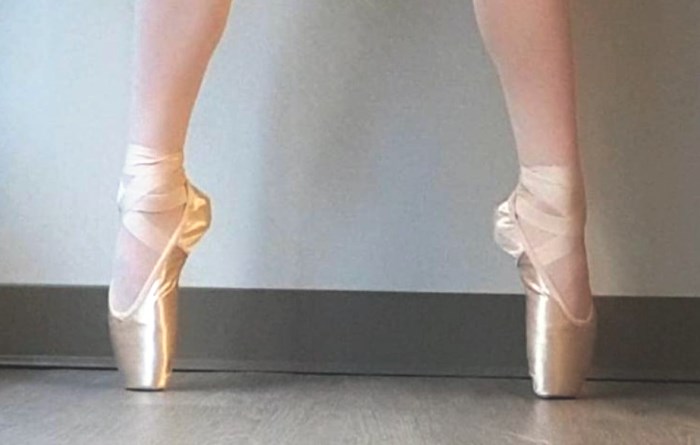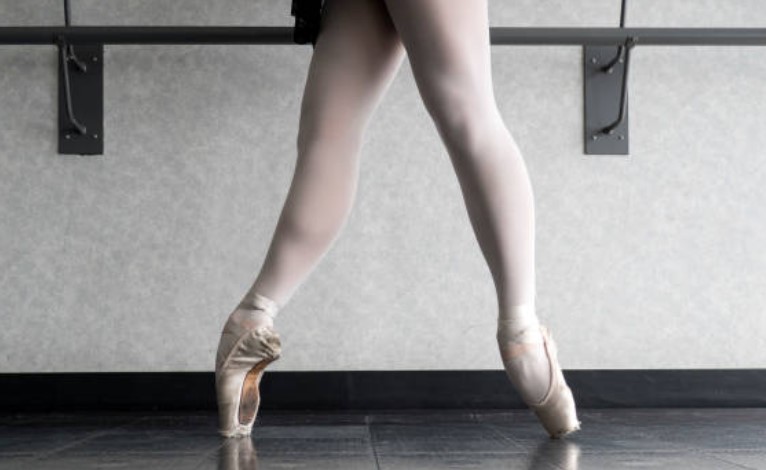No matter what opinion you have about ballet, there’s no denying that it’s an exacting art that requires great strength, precision, and technical skill. For a dancer to achieve a graceful look, they need to be fluent in various basic dance moves … one of which is the ballet relevé.
In this article, we’ll explore what a ballet relevé is, why it is important, and provide step-by-step instructions on how to execute a perfect relevé!
Table of Contents
What Is A Ballet Relevé?
Relevé meaning, in French, is to “raise up”. True to its name, it’s a rising movement onto the balls of the feet. When done correctly, the dancer should look as if they’re “floating” in the air.
Despite its simplicity, performing a proper ballet relevé still requires a great deal of practice, control, and balance.
Benefits Of Relevé In Ballet
Relevés are taught to beginner ballet dancers not without a reason. Besides looking great when done correctly, they also improve the physique and technical skill of the dancer, as well. It’ll act as a sort of “launch pad” for them to later learn more advanced moves.
Improves Strength
Practicing relevés in ballet can help to improve the strength of the muscles in the feet, ankles, calves, and thighs. These muscles play a vital role in maintaining balance and stability while performing various ballet steps.
Better Technical Skill
Relevés are a foundational movement in ballet, and mastering them is crucial for developing strong technique.
When performing a relevé, dancers must focus on engaging the muscles in their feet and ankles, pointing their toes, and maintaining proper alignment.
With enough practice, the level of control and precision that the dancer has will go up, too.
Develops Balance
Maintaining balance on the balls of the feet during a relevé requires a great deal of control and core strength. As such, this move is a popular exercise for all dancers (beginners and experts alike) to train their sense of balance.
Increases Flexibility
Ballet relevés involve pointing the toes and extending the feet and ankles. Over time, practicing relevés can increase the range of motion in these areas, leading to greater flexibility and range of motion. You’ll be able to perform smoother and more gracefully.
Improves Posture
While you’re doing a relevé, your core muscles will engage. Plus, with the help of a good instructor keeping your posture in check, over time, your posture and alignment will improve significantly.
Other than minimizing risks of injuries while on the stage, the quality of your performance can only go up from this!
Check more: Dessous Ballet Definition
Difference Between Relevé And Elevé In Ballet
Because relevés and elevés are very similar to one another (both moves rise to the balls of the feet), it’s easy to mistake them for the same thing. However, there are some key differences between these two movements.
A relevé is a gradual rising movement onto the balls of the feet, where the dancer maintains a controlled and steady lift. Then, it’s usually followed by a slow descent.
In contrast, an elevé is a simple lifting of the heels off the ground, without the gradual rise of a relevé. The movement is fast and snappy, without the gracefulness that’s seen in a relevé.
But just because it’s subjectively snappier doesn’t mean the elevé is an “uglier” variant of the relevé! Both moves have their own place in the repertoire of a ballet dancer as well as a training regime.
Just like relevé, the elevé can help an initiating dancer with training their calves and leg muscles in preparation for trickier moves.
Check more: How To Tie Pointe Shoe Ribbons?
How To Do A Relevé In Ballet?
A relevé is a fairly basic move, so the steps aren’t at all complicated.
1. Begin in a plié position
Stand with your feet hip-width apart and your toes turned out, heels touching each other. Then, bend your knees, lowering your body into a plié position, while keeping your heels on the ground.
2. Lift your heels and engage your core
As you begin to lift your heels off the ground, engage your core muscles to maintain a straight back. Flexing your core muscles will also prevent any wobbling as you raise up on your heels.
For beginners with weak ankles, you don’t have to raise your heels too far off the ground. Instead, just a couple of inches will do.
3. Hold the relevé
Once you have lifted onto the balls of your feet, hold the position for a few seconds.
Keep your legs strong and straight by engaging the muscle groups of your calves. Your legs should also be rotated outward (the front of your thighs facing opposite directions externally.)
Keep your core engaged and your shoulders down and relaxed.
4. Lower back down
Slowly lower your heels back down to the ground, returning to the plié position. Keep it slow and maintain your balance so that the movement is smooth throughout. Avoid any wobbling.
Rinse and repeat!
Tips For A Stronger & Higher Ballet Relevé
At first, you’ll only be able to lift your heels a few inches off the ground. After some time, your calves will also be burning and your ankles will ache.
But just like any kind of workout, with regular practice (and some tricks!), executing and holding a relevé will become almost like child’s play.
Here are a couple of tips that you can use to do stronger, higher ballet relevé.
Practice Relevés Regularly
Because relevés are so “simple”, a lot of students neglect them. That’s a huge mistake.
Incorporate relevés into your warm-up and practice them at the barre and in center work. The extra strength, flexibility, and control that you’d get from the exercise will help no matter at what stage of learning you’re at.
Pay Attention To Your Alignment
Maintaining proper alignment is essential for a strong and stable relevé. Keep your shoulders down and relaxed, engage your core, and lengthen your spine.
Preferably, you should be practicing ballet relevé exercises with an instructor who will fix your posture. You should also practice in front of the mirror to visually inspect and adjust your posture on your own.
One of the many benefits of practicing the relevé often is that it helps you with your posture. If you don’t pay close attention to your alignment, it’s easy to develop bad habits that will hurt you down the line.
A good alignment will also translate to a smoother relevé!
Strengthen Your Feet And Ankles
Strengthen your feet and ankles with exercises such as relevé on demi-pointe, heel raises, and ankle rotations. Use a resistance band to add extra resistance and challenge to your practice.
As your strength builds, you’ll also find it easier to raise up on your heels and lower down, too.
Go A Little Higher With Every Session
When you first start practicing the ballet relevé position, you’ll most likely only be able to lift your heels to around a few inches off the ground. But as you practice, you should be able to get higher and higher as your muscles strengthen.
So, in every session, try and see if you can push yourself a bit higher. Even if it’s just one inch higher, it still counts as progress!
Do note, however, that you should have your instructor keep an eye on you as you do, and don’t push yourself way too hard when your body isn’t ready. Doing so will only injure you.
Practice Variations
Admittedly, relevés aren’t very flashy moves, so they can get pretty boring after a while. To break up the monotony, once you have mastered a basic relevé, practice variations such as relevé with a developpé or relevé with a port de bras.
It’ll keep your mind in the game for longer. And you’ll also get some extra practice with other moves out of these variation exercises!
Final Words
Ballet relevé, while a basic move, can help ballet dancers of any level to develop their strength, technique, and control. It’s not flashy, but it offers a solid foundation for you to learn more advanced tricks and moves in the future as your dancing skill grows.
We hope you’ve found this short, step-by-step guide on the relevé helpful. If you have any other questions you’d like to ask, don’t hesitate to leave a comment down below. We’ll get back to you as soon as we can!

